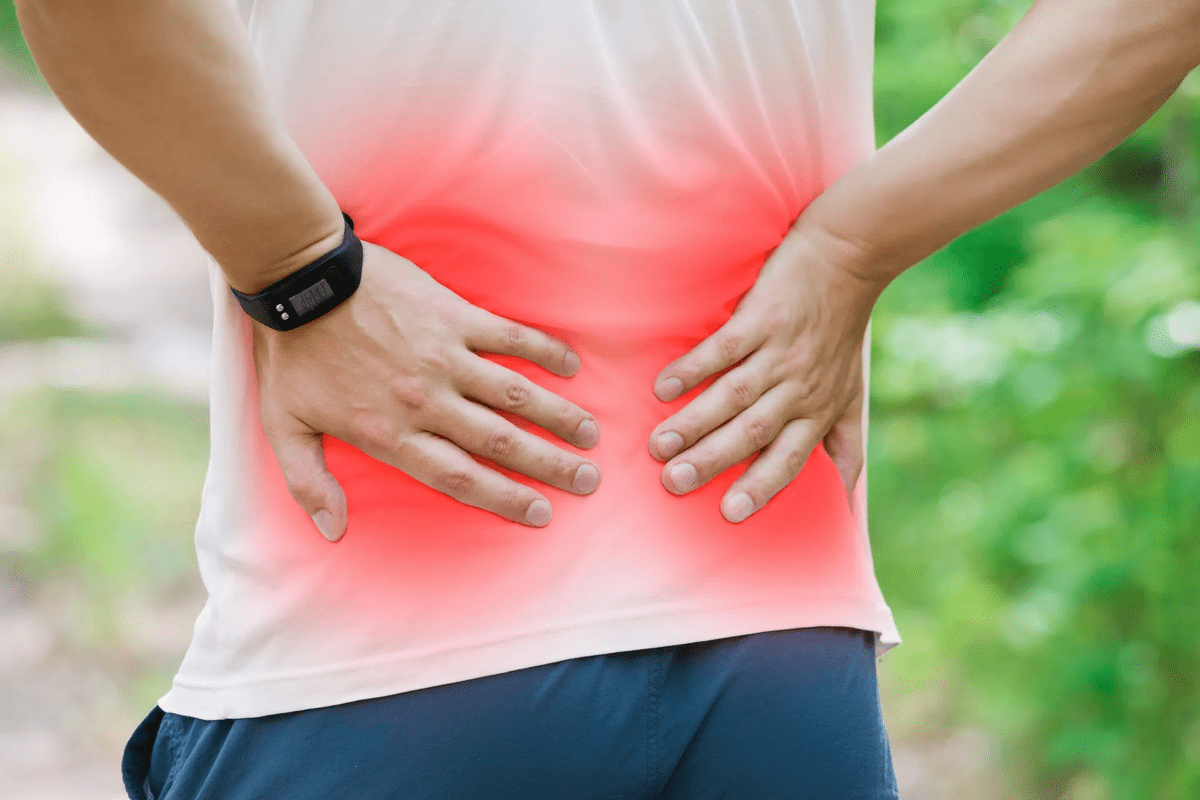Last Updated on October 31, 2025 by

At Liv Hospital, we understand the importance of stage 2 chronic kidney disease (CKD). It’s a condition with mild kidney damage. In this early stage, the kidney function is slightly lower, with an estimated glomerular filtration rate (eGFR) between 60 and 89.
Even with this slight decrease, kidneys can filter blood well. This often means there are no obvious symptoms. So, it’s hard to spot without medical tests. Knowing about kidney disease level 2 is key to stopping it from getting worse.
We aim to give top-notch medical care. We focus on early detection and managing CKD stage 2 well. This can greatly help your long-term health.

When you’re diagnosed with Stage 2 kidney disease, it means your kidneys are damaged but not too badly. It’s important to know about CKD stages to handle your condition well.
CKD is split into five stages based on kidney damage and function. Stage 2 means your kidneys are mildly damaged, with an eGFR of 60 to 89. This helps doctors figure out how serious your kidney disease is and what treatment you need.
The eGFR measures how well your kidneys filter waste. This number is key in figuring out how severe your CKD is.
Stage 2 CKD has mild damage and often no clear symptoms. But, markers like albuminuria show kidney injury. Albuminuria means your kidneys are damaged.
At this stage, you might not feel sick, so regular check-ups are vital. Keeping an eye on your kidney function and damage markers helps slow the disease.
Stage 2 CKD is different because of the level of kidney damage and function. It’s less severe than Stage 1 but more than Stage 3. Knowing these differences helps doctors tailor your treatment.
Unlike later stages, Stage 2 offers a chance for early action to slow disease. Acting early at Stage 2 can greatly improve your long-term health.

Understanding stage 2 chronic kidney disease (CKD) is key to managing it well. At this stage, the kidneys have suffered mild damage. We need to know what causes this damage to stop it from getting worse.
Kidney damage in CKD gets worse over time. In stage 2, the kidneys are not as damaged as they could be. But, signs like albuminuria or lower eGFR show that damage is happening. We must watch these signs closely.
Many things can cause kidney damage, like hypertension and diabetes. It’s important to manage these conditions to slow down kidney damage.
eGFR shows how well the kidneys are working. In stage 2, eGFR is between 60 to 89 mL/min/1.73m². This means the kidneys are not too damaged yet. We use eGFR to see how severe the disease is and how it changes over time.
Albuminuria, or albumin in the urine, shows kidney damage. In stage 2, albuminuria might be present. Other signs include hematuria and casts in the urine.
We use these signs to see how damaged the kidneys are. Managing albuminuria and other signs is important to slow CKD’s progress.
By understanding stage 2 CKD, including eGFR and albuminuria, we can make better plans. This helps slow the disease and improve patient outcomes.
It’s important to know what causes stage 2 chronic kidney disease (CKD). We’ll look at medical conditions, lifestyle choices, and genetics that lead to it.
Some medical issues are big contributors to stage 2 CKD. Diabetes and hypertension are the top reasons worldwide. Diabetes harms the kidneys’ filters, while high blood pressure damages the kidney’s blood vessels.
Other conditions that can lead to stage 2 CKD include:
Lifestyle choices also raise the risk of stage 2 CKD. Smoking harms blood vessels and reduces kidney blood flow. Eating too much sodium and processed foods can also damage kidneys by raising blood pressure and causing obesity.
Other lifestyle factors that increase CKD risk include:
Genetics and demographics also affect CKD risk. People with a family history of kidney disease are at higher risk. Certain ethnic groups, like African Americans, are more likely to get hypertension and CKD.
Risk Factor | Description | Impact on CKD Risk |
Diabetes | Damages kidney filters | High |
Hypertension | Damages kidney blood vessels | High |
Smoking | Reduces blood flow to kidneys | Moderate to High |
Family History | Increases genetic predisposition | Moderate |
Knowing these causes and risks helps us prevent and manage stage 2 CKD better.
Stage 2 CKD often doesn’t show symptoms. But, there are signs that might point to kidney problems. It’s key to get regular check-ups to catch it early.
Early CKD, like Stage 2, is often quiet. People might not feel sick until it’s too late. Knowing this helps us stress the need for regular health checks.
The lack of noticeable symptoms in early CKD is due to the kidneys working hard. Even when they’re not working right, they can keep up, hiding the signs.
Even though Stage 2 CKD might not show obvious signs, there are small hints. These include:
These symptoms can mean many things, not just kidney disease. But, if they keep happening, see a doctor.
If you notice any signs that might mean kidney trouble, or if you’re at risk for CKD, see a doctor. Catching it early can really help.
It’s smart to look after your kidneys, even more so if you have diabetes, high blood pressure, or other kidney-risk conditions.
Symptom | Description | Action |
Changes in Urination | Increased frequency, foamy urine, or other changes | Consult a healthcare provider if changes persist |
Fatigue | Feeling weak or tired without clear reason | Discuss with a healthcare provider to rule out underlying conditions |
Swelling | Fluid retention causing swelling in legs, ankles, or feet | Seek medical advice to determine the cause of swelling |
To diagnose stage 2 CKD, doctors use many tools and methods. Finding CKD stage 2 early is key for treatment.
Blood tests are vital for diagnosing stage 2 CKD. The estimated Glomerular Filtration Rate (eGFR) shows how well the kidneys work. eGFR measures how fast the kidneys filter waste. If eGFR is low, the kidneys are not working right.
To get an eGFR, a blood sample is taken from a vein. The result is based on age, sex, and serum creatinine level. An eGFR of 60-89 ml/min/1.73m means stage 2 CKD, showing mild kidney damage.
Urine tests are also key for diagnosing stage 2 CKD. The Albumin-to-Creatinine Ratio (uACR) checks for protein in the urine. Protein in the urine means kidney damage. We use uACR to see how bad the damage is and if treatment is working.
The uACR test uses a random urine sample. High uACR means kidney damage. Finding albuminuria early helps stop CKD from getting worse.
Imaging studies like ultrasound, CT scans, or MRI scans are also used. These tests find problems like cysts or tumors in the kidneys. We might do more tests to check the kidneys’ health.
We also look at the patient’s medical history and do physical exams. Using many tests helps us diagnose and manage stage 2 CKD well.
Stage 2 CKD treatment is a mix of managing medicines, healthy habits, and controlling other health issues. This approach is key to slowing kidney damage and keeping overall health good.
Managing medicines is a big part of treating stage 2 CKD. We use drugs to control blood pressure, lower protein in the urine, and handle other issues. ACE inhibitors or ARBs are often used to protect the kidneys by lowering blood pressure and reducing protein in the urine.
It’s important for patients to stick to their medicine plan and talk to their doctor about any issues. Regular checks on kidney health and adjusting medicines as needed are key to managing CKD well.
Changing your lifestyle is also key in managing stage 2 CKD. We suggest a kidney-friendly diet that’s low in salt, fat, and protein. Eating less sodium helps control blood pressure, and eating less protein eases the strain on the kidneys.
Other lifestyle changes include:
It’s important to manage health issues that can affect CKD. For those with diabetes, keeping blood sugar in check is critical. Controlling blood pressure through lifestyle and medicine also helps slow CKD.
We also stress the need to manage heart disease and high cholesterol. This is done through lifestyle changes and medicine.
Treatment Approach | Description | Benefits |
Medication Management | Use of ACE inhibitors, ARBs, and other medications to control blood pressure and reduce proteinuria | Slows CKD progression, reduces cardiovascular risk |
Lifestyle Modifications | Adopting a kidney-friendly diet, maintaining a healthy weight, exercising regularly, quitting smoking, and limiting alcohol | Improves overall health, reduces strain on kidneys |
Managing Underlying Conditions | Controlling blood sugar, blood pressure, and managing related conditions | Slows CKD progression, improves quality of life |
It’s important to stop stage 2 chronic kidney disease (CKD) from getting worse. Good management can really help keep your kidneys healthy. This can prevent more damage.
Keeping blood pressure in check is key to slowing CKD. High blood pressure can harm kidney blood vessels, making the disease worse. Managing hypertension through lifestyle changes and medicine can help.
For people with diabetes, controlling blood sugar is also critical. High blood sugar can harm kidney tissues. Keeping blood sugar levels in check can greatly lower the risk of CKD getting worse.
Diet is very important for managing CKD. Dietary modifications can help ease the load on your kidneys and slow disease progression. It’s important to limit sodium to manage blood pressure. Also, eating less protein can help reduce the kidneys’ workload.
Regular checks on kidney function are vital for stage 2 CKD patients. Regular check-ups with healthcare providers can catch any changes early. This allows for quick adjustments to treatment plans.
Monitoring includes blood tests to check eGFR levels and urine tests to check albuminuria. These tests give insights into kidney health. They help guide management strategies.
By controlling blood pressure and sugar, making dietary changes, and monitoring regularly, people with stage 2 CKD can lower the risk of disease progression.
Knowing the long-term outlook for stage 2 chronic kidney disease (CKD) is key. The prognosis can change a lot based on health conditions and how well they are managed.
Many things can affect how stage 2 CKD progresses. These include underlying health conditions like diabetes and high blood pressure. Lifestyle choices and genetics also play a role. It’s important to manage these well to slow the disease.
For example, keeping blood pressure in check can help a lot. Also, controlling blood sugar in diabetics can prevent kidney damage.
The life expectancy and quality of life for stage 2 CKD patients vary. With good management, many can live active lives with few symptoms. Regular check-ups and treatment adjustments are key to a good life.
It’s vital for patients to work closely with their healthcare providers. This helps in managing symptoms and preventing complications.
There are many success stories of people managing stage 2 CKD well. By making healthy lifestyle choices and sticking to treatment plans, many have slowed their disease’s progress.
For instance, a patient who controls blood pressure and diabetes through diet, exercise, and meds can delay CKD’s progression. These stories show the power of proactive management and education.
By understanding what affects disease progression and taking action, people with stage 2 CKD can improve their outlook. They can also keep a high quality of life.
Managing stage 2 chronic kidney disease (CKD) is key to stopping it from getting worse. Knowing how to handle it can greatly improve your health. By understanding the basics, you can start managing your condition today.
Early detection and proper care are vital for stage 2 CKD. This means using medicine, changing your lifestyle, and keeping an eye on your health. It’s also important to control blood pressure and blood sugar, eat right, and see your doctor often.
With the right steps, you can effectively manage stage 2 CKD. Working with your doctor and making smart lifestyle choices can greatly improve your life. It also lowers the chance of serious problems.
Stage 2 CKD means your kidneys are damaged and don’t work as well as they should. Your eGFR is between 60 and 89.
Many people with stage 2 CKD don’t show symptoms. But, you might notice changes in how you pee, swelling, or feeling very tired.
Doctors use blood tests to check your eGFR. They also do urine tests and imaging to see if your kidneys are damaged.
Diabetes, high blood pressure, and certain lifestyle choices can increase your risk. Genetics also play a role.
Treatment includes taking medicine, making lifestyle changes, and managing other health issues. This helps slow the disease.
Eating right, exercising, keeping a healthy weight, and not smoking can help manage CKD.
Keeping blood pressure and sugar levels in check, following a special diet, and regular kidney checks can prevent it from getting worse.
The outlook depends on how the disease progresses and your overall health. But, with proper care, you can improve your chances.
CKD can’t be cured, but catching it early and managing it well can slow it down. This reduces the risk of serious problems.
It’s important to have regular checks. How often depends on your health and how fast the disease is moving.
Chronic Kidney Disease – https://www.ncbi.nlm.nih.gov/books/NBK535404/
Subscribe to our e-newsletter to stay informed about the latest innovations in the world of health and exclusive offers!